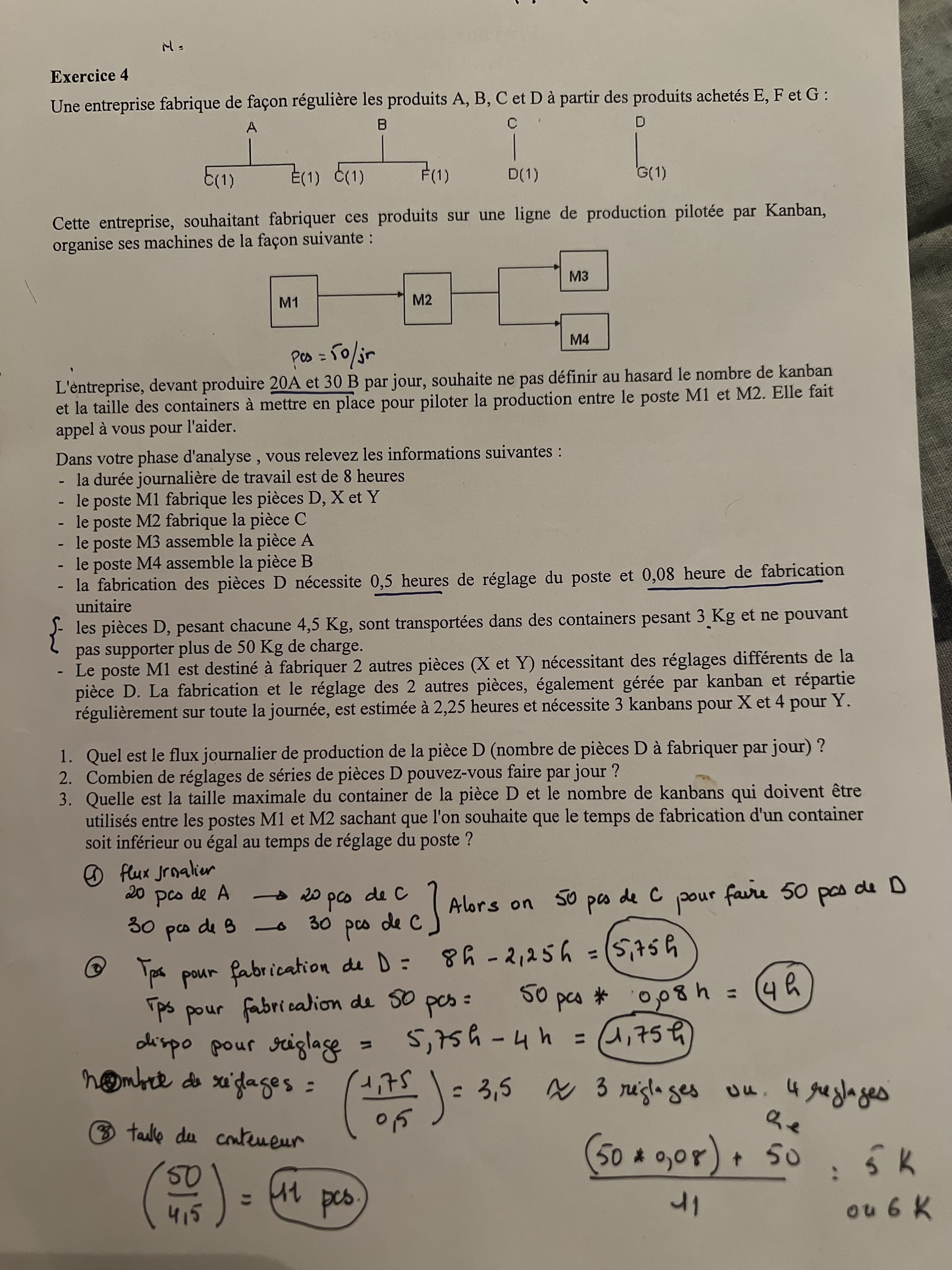Hello, @Jordan Johnson
I am contacting you because I have done an exercise on Kanban that I am sending you with the solution that I wrote on the attached sheet. My wish is to model on Flexim, and since this is my first time using this software, I would like you to help me with the commentary or a demon to guide me. On the other hand if my writings are not clear, I can redo them so that you see clearly. Wishing you an excellent evening and thank you in advance.
The final result for the number of kanban that I would need for this problem is between 5 and 6 and the size of my D container is 11 pieces.
Best regards;


